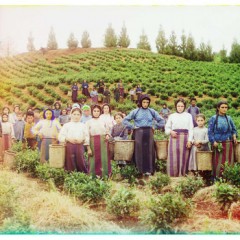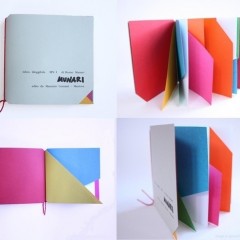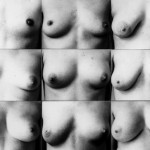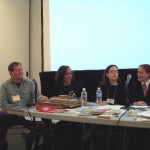Steven Daiber is an artist who runs Red Trillium Press. He recently published a book, El Muro, with Cuban artist Eduardo Hernandez Santos. Before the book was published, the prints were shown at the Havana Biennial. This is part two of my interview with Daiber.
The Red Trillium website says you met Cuban photographer Eduardo Hernández Santos because he and your wife, photographer Jacqueline Hayden were exchanging photographs. How did that come about? What kinds of prints were exchanged? Hernández makes photos…does Jacqueline make photos too?
In April 2007, Jackie had a solo exhibition at Artes Plasticas Galleria, Havana, Cuba and agreed to exchange work with Eduardo. Both of them are interested in the body. Jackie has photographed the figure since 1991 when she did her first series on the aging figure model. The work she was showing in Havana was a series of abstracted figures she had created with Danza Voluminosa. Eduardo was trained as printmaker, and his current works are photo collages of the male figure. Both push hard against the stereotype of beauty portrayed in popular culture, looking to the realities of life with our bodies. Eduardo shared with us 25 years of work starting with Geneses & Apocalipsis, a series created in 1988. Almost as an after thought he brought out El Muro. Leaning over Jackie’s shoulder, I saw a book in the completed series of photographs — life portrayed — brave, heroic, and beautiful.
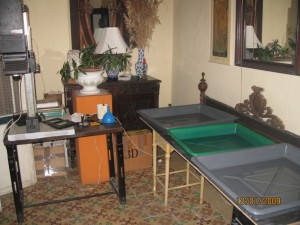
I love that your family is involved.
We have one daughter Lilly, 16 years old. She is busy drawing, painting, playing the drums and seems to have an inherent eye for video editing. She did her first printmaking in Cuba this past March and assisted Eduardo in preparing El muro for the Havana Biennial. When she was 10 she was asked to perform in Un Muerta Dulce in the Cuban National Theater by the choreographer Juan Miguel Mas of Danza Voluminosa. She attends the Pioneer Valley Performing Arts High School. Who’s to say? I only push her to pick up her room monthly and not leave the glue brushes out to dry.
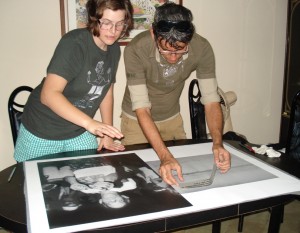
How are book sales going these days?
We have been fortunate to place El muro in a number of collections here in the United States and in Europe. To name a few: MOMA, British Library, Stanford, University of Miami, Smith College, Yale, Princeton, and Ibero-Amerikanisches Institut Library, Germany.
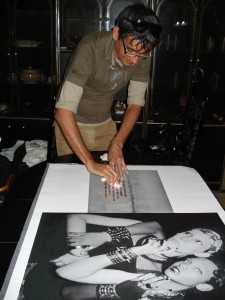
Are you seeing the effects of the recession like everyone?
We are beset by the worst economic times any of us have experienced since our parents or grandparents generation. It is a difficult time- nothing short of blatant thievery by a few got us into this mess. To overcome this economic mismanagement we each need to think about sharing and supporting each other, working hard and not giving up on our dreams. This shouldn’t be a mindset just during hard times but an approach to daily life, especially sharing and support in the community.
If I had been an astute businessman, I would have had a plan, followed it and then pulled the plug before going to the printer. BUT, where is the romance in that? El Muro is a great series and everyone involved worked hard during the past 2 years to design a book that honors Eduardo’s photographs and pays homage to the gay – trans community in Havana.
I have had to rethink my marketing. When holding El Muro, the semi-concealed wire o-binding provides a tactile texture to compliment the visual texture of the wall; the pages open to reveal from hiding a shadowed community. These strengths in the design, the softness of cover, the wire binding, and the size of the book are its commercial limitations. It doesn’t want to fit on the standard bookstore shelf and a quick thumbing of the pages reveals little.
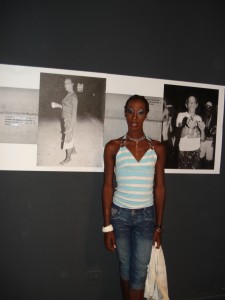
This November and December I will donate 20% of the sales of El muro to non – profit organizations and of course Cuban artists. With every trip to Cuba I take ink, paint, brushes, litho crayons, paper etc. to the artists I work with and to various print shops. On the new website a buyer can choose a community to support. To start this campaign I’ve chosen a couple of schools, libraries and programs that reflect my interests in the New England community. Starting January for the 2010 year I will choose one community a month to support with a percentage donation from the sale of El muro. I welcome any suggestions to whom or where to allocate these donations. The second monthly allocation choice is always towards a fund for art supplies to Cuban artists.
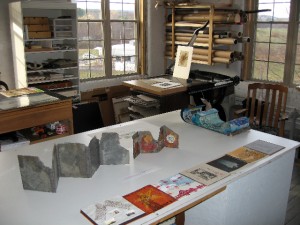
Are you funded for your trips or are you self-funding…either through book sales or other business things?
My trips have always been self-funded through my book sales, teaching and sales commissions of Cuban prints and books. The trip to Vietnam was supported by a grant from the Boston Printmakers and the U.S. Sate Department cultural envoy program.
You have also visited Vietnam to do projects with Vietnamese artists. Any future trips coming up?
I have written a grant to return to Vietnam in the fall of 2010 and will return to Cuba with my family in February 2010.
Daiber will give a gallery talk Nov. 22 at 2 pm at Boston’s Laconia Gallery. The talk, about his experience collaborating with Cuban printmakers, is in conjunction with the gallery’s exhibit Making Connections: Contemporary Cuban Printmakers.



